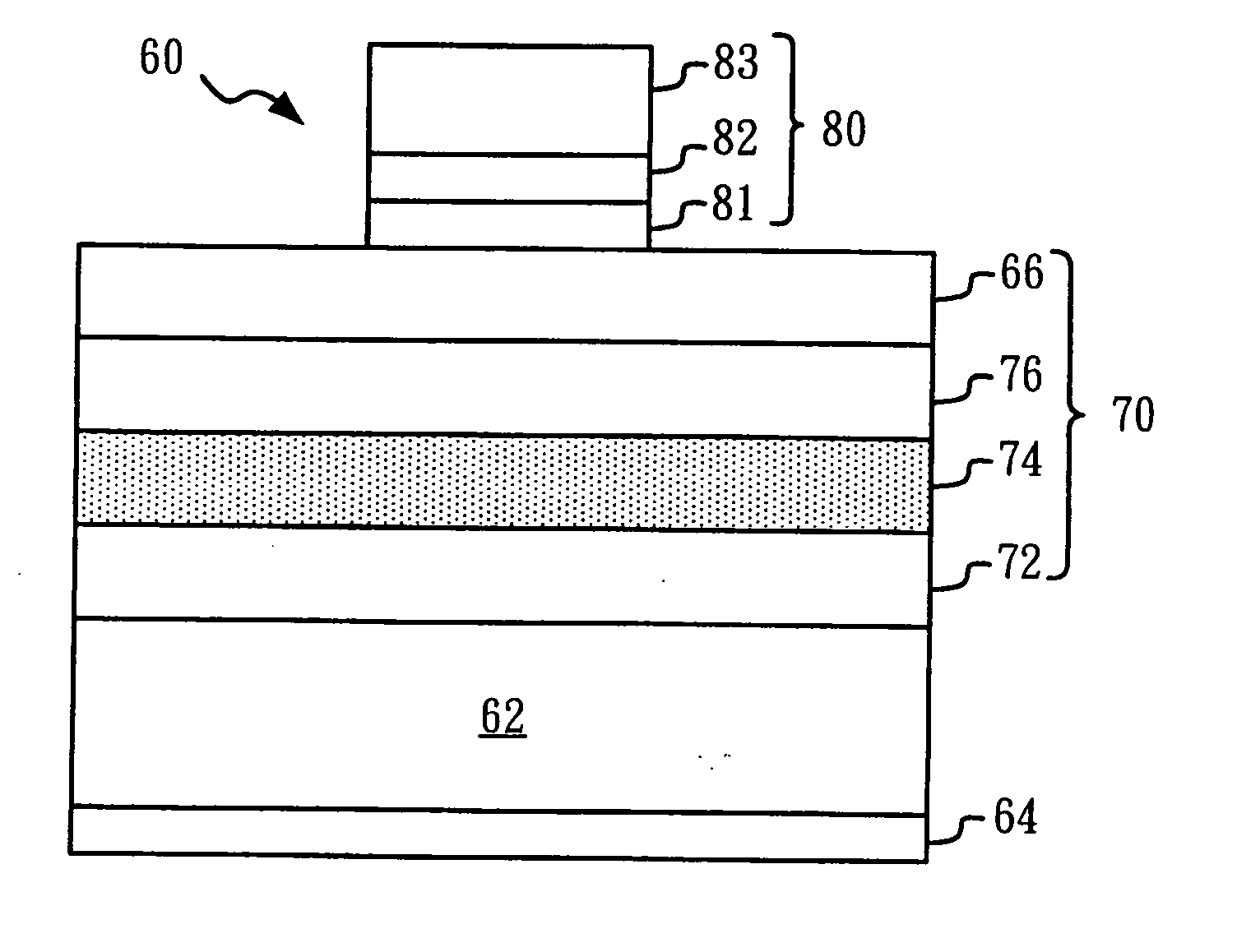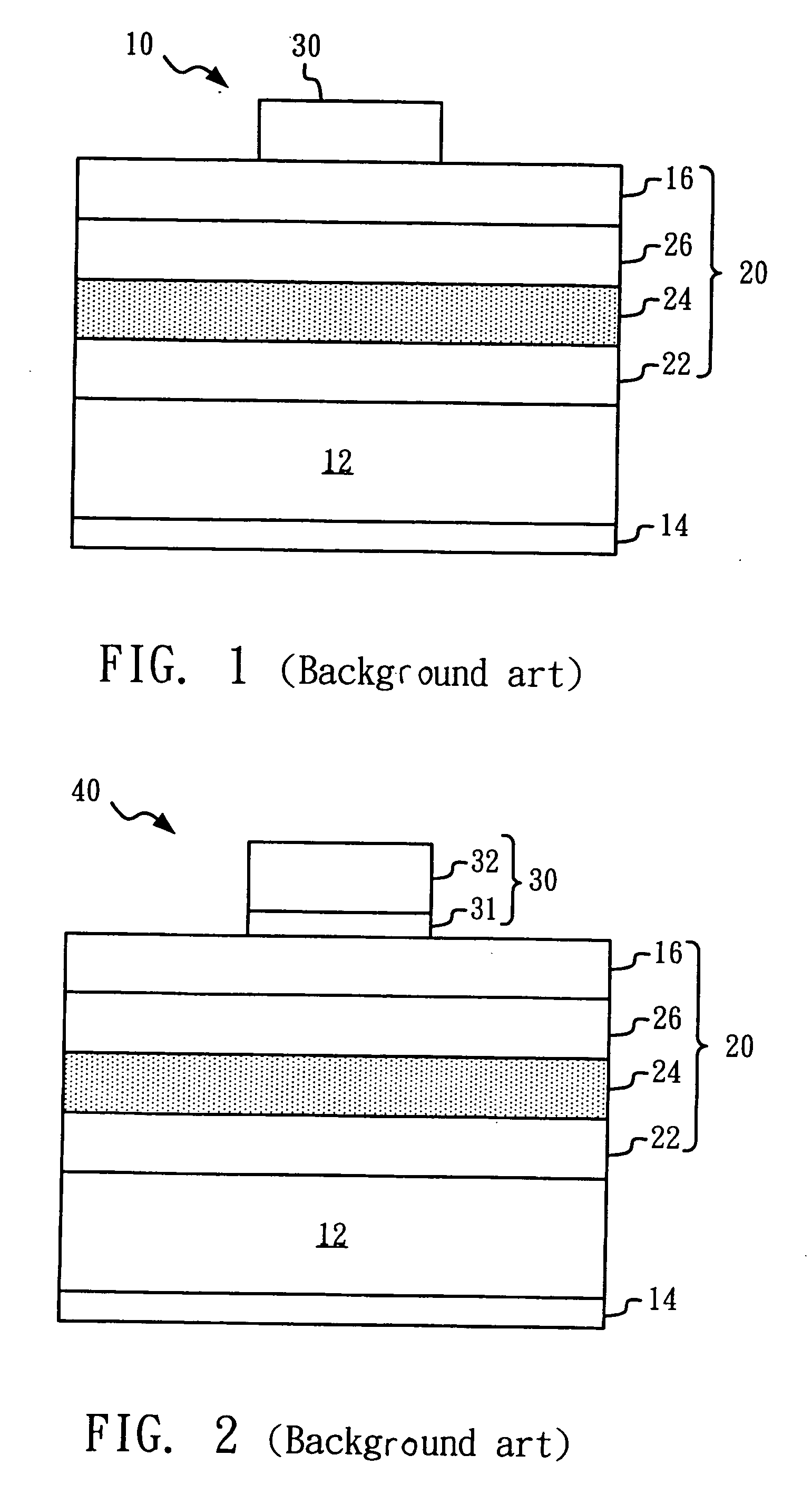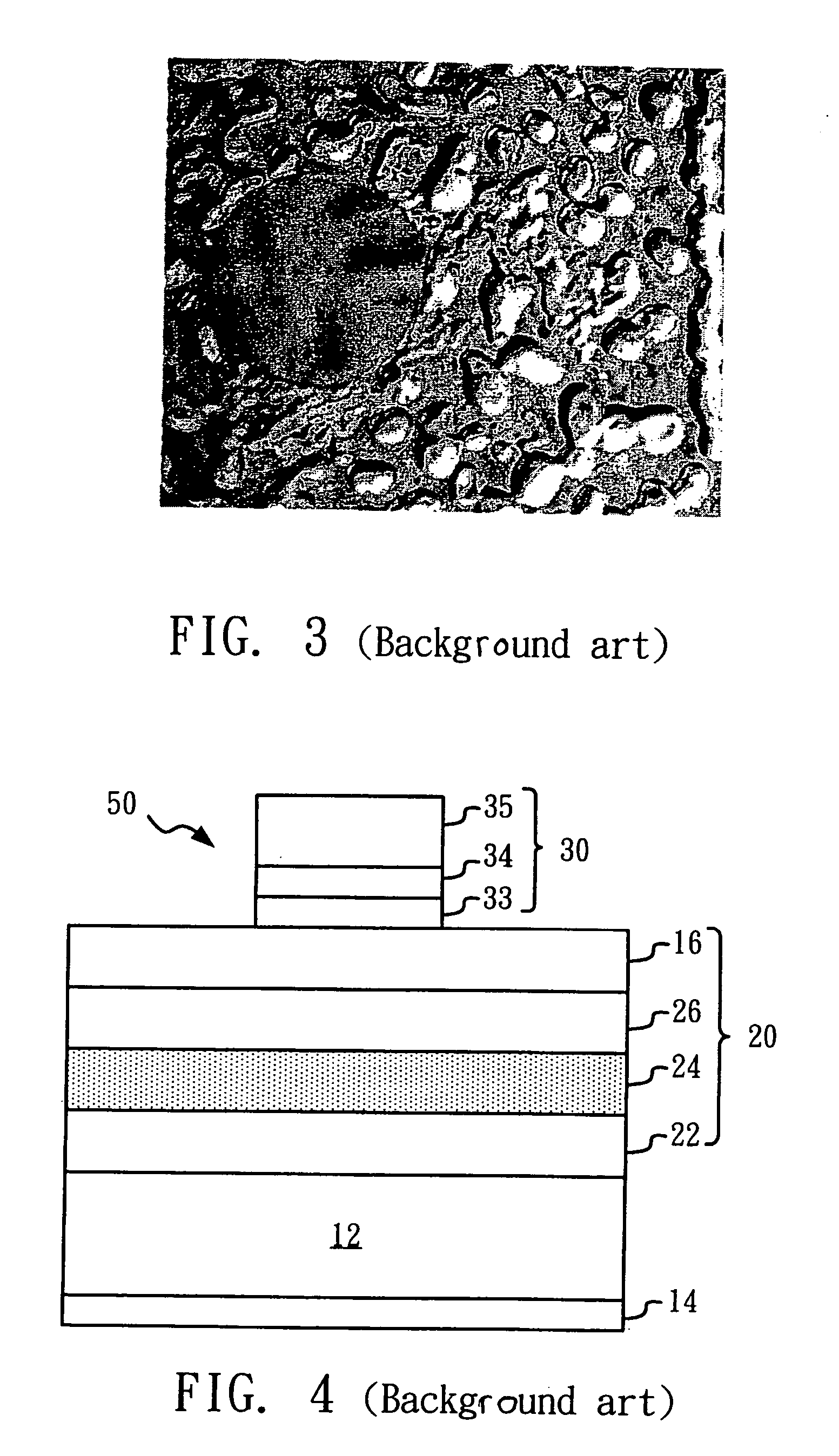Semiconductor device and method for fabricating the same
a technology of semiconductor devices and ohmic contact electrodes, which is applied in the direction of semiconductor devices, semiconductor/solid-state device details, electrical apparatus, etc., can solve the problems of high annealing temperature and complicated manufacturing procedures, poor ohmic contact electrode surface after annealing process, and insufficient for subsequent metal wire bonding, etc., to achieve stable power output
- Summary
- Abstract
- Description
- Claims
- Application Information
AI Technical Summary
Benefits of technology
Problems solved by technology
Method used
Image
Examples
first embodiment
[0037]FIG. 6 is a cross-sectional diagram of a light-emitting device 60 according to the present invention. As shown in FIG. 6, the light-emitting device 60 comprises an N-type GaAs substrate 62, an epitaxial structure 70 positioned on the upper surface of the N-type GaAs substrate 62, an N-type ohmic contact electrode 64 positioned on the bottom surface of the N-type GaAS substrate 62, and a P-type ohmic contact electrode 80 positioned on the epitaxial structure 70. The epitaxial structure 70 consists of a first reflection layer 72, a light-emitting layer 74, a second reflection layer 76 and a P-type GaAs contact layer 66. The carrier density of the P-type GaAs contact layer 66 is more than 1019 / cm3, and the reflectivity of the first reflection layer 72 is more than or equal to that of the second reflection layer 76.
[0038] The P-type ohmic contact electrode 80 of the present invention can be a three-layer structure including a first nickel layer 81 positioned on the P-type GaAs con...
second embodiment
[0044]FIG. 11 is a cross-sectional diagram of a light-emitting device 90 according to the present invention. As shown in FIG. 11, the P-type ohmic contact electrode 80 of the light-emitting device 90 is a five-layer structure. The P-type ohmic contact electrode 80 of the light-emitting device 90 further comprises a nickel-chrome alloy layer 84 and a second gold layer 85 in addition to the first nickel layer 81, the first platinum layer 82 and the first gold layer 83. A pure nickel layer or a pure chrome layer also can replace the nickel-chrome alloy layer 84, and the metal wire is bonded on the surface of the second gold layer 85 directly.
third embodiment
[0045]FIG. 12 is a cross-sectional diagram of a light-emitting device 100 according to the present invention. As shown in FIG. 12, the P-type ohmic contact electrode 80 of the light-emitting device 100 is a six-layer structure. The P-type ohmic contact electrode 80 of the light-emitting device 100 further comprises a metal layer 86, a second platinum layer 87 and a third gold layer 88 in addition to the first nickel layer 81, the first platinum layer 82 and the first gold layer 83. The metal layer 86 also can be made of nickel or titanium, and the metal wire is bonded on the surface of the third gold layer 88 directly.
[0046] Compared with the prior art, the present light-emitting de possesses the following advantages:
[0047] 1. The annealing temperature for forming the P-type ohmic contact electrode and the N-type ohmic contact electrode can be reduced to a range between 220 and 330° C., which can avoid to damage the device by dramatically reducing the cross-diffusion between the la...
PUM
| Property | Measurement | Unit |
|---|---|---|
| thickness | aaaaa | aaaaa |
| thickness | aaaaa | aaaaa |
| temperature | aaaaa | aaaaa |
Abstract
Description
Claims
Application Information
 Login to View More
Login to View More - R&D
- Intellectual Property
- Life Sciences
- Materials
- Tech Scout
- Unparalleled Data Quality
- Higher Quality Content
- 60% Fewer Hallucinations
Browse by: Latest US Patents, China's latest patents, Technical Efficacy Thesaurus, Application Domain, Technology Topic, Popular Technical Reports.
© 2025 PatSnap. All rights reserved.Legal|Privacy policy|Modern Slavery Act Transparency Statement|Sitemap|About US| Contact US: help@patsnap.com



